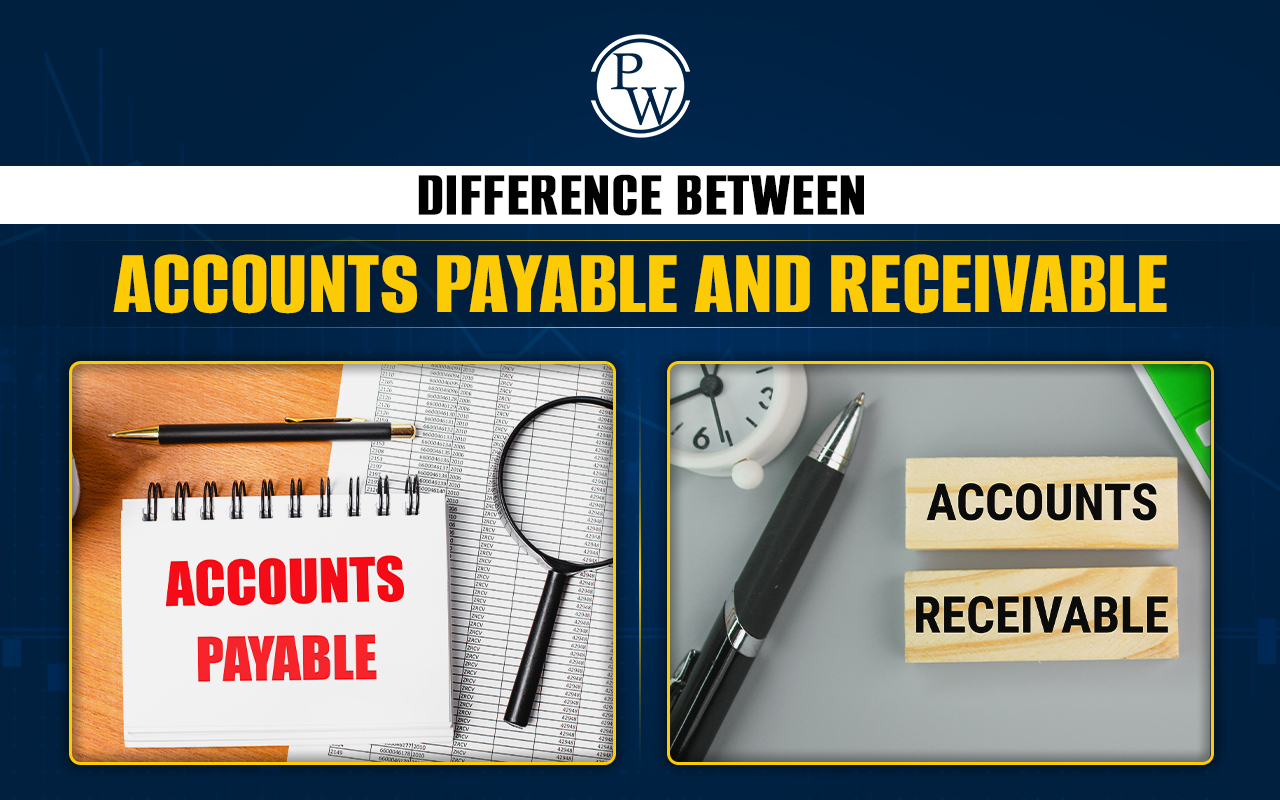

Difference between Account Receivable and Account Payable: In the world of business finance, accounts receivable and accounts payable are fundamental concepts that significantly impact a company’s cash flow and overall financial health. While they may seem similar at first glance, they represent very different financial transactions and roles within a business. This blog will explore what accounts receivable and accounts payable are, their differences, and their importance in financial management.
What is Account Receivable?
Accounts receivable (AR) refers to the money owed to a business by its customers for goods or services that have been delivered but not yet paid for. It is considered a current asset on the balance sheet, indicating the funds that the company expects to collect in the near future. Essentially, accounts receivable arise when a company sells its products or services on credit, allowing customers to pay at a later date.Key Features of Accounts Receivable:
Asset : Accounts receivable is listed as a current asset because it is expected to be converted into cash within a year. Credit Sales : These amounts result from credit sales, where customers are given a grace period to settle their invoices. Collection Period : The time taken to collect accounts receivable is known as the collection period, which is a crucial metric for cash flow management. Management : Effective management of accounts receivable is essential to ensure timely payments and maintain liquidity.Examples of Accounts Receivable:
A retail store sells merchandise on credit, allowing customers to pay within 30 days. A service provider offers services and invoices the client, with payment due in 15 days. A software company licenses its product and allows businesses to pay over a specified period.What is Account Payable?
Accounts payable (AP), on the other hand, represents the money a business owes to its suppliers or vendors for goods and services purchased on credit. It is categorized as a current liability on the balance sheet, indicating obligations that the company needs to settle in the short term.Key Features of Accounts Payable:
Liability : Accounts payable is recorded as a current liability because it reflects debts that are due within a year. Credit Purchases : These obligations arise from credit purchases, where suppliers allow businesses to receive goods or services before payment is made. Payment Terms : Accounts payable usually come with specific payment terms, such as “net 30,” indicating that payment is due within 30 days. Cash Flow Impact : Managing accounts payable efficiently helps businesses maintain positive cash flow and negotiate better terms with suppliers.Examples of Accounts Payable:
A manufacturing company orders raw materials and agrees to pay the supplier within 60 days. A business receives utility services and pays the bill at the end of the month. A company purchases office supplies on credit with payment due in 30 days.Key Difference between Account Receivable and Account Payable
Here’s a comprehensive comparison table highlighting the difference between Accounts Receivable and Account Payable| Difference Between Account Receivable and Accounts Payable |
| Aspect | Accounts Receivable | Accounts Payable |
| Definition | Money owed to the business by customers | Money the business owes to suppliers |
| Nature | Current asset | Current liability |
| Impact on Cash Flow | Increases cash flow when collected | Decreases cash flow when paid |
| Balance Sheet Position | Listed under assets | Listed under liabilities |
| Purpose | Represents sales made on credit | Represents purchases made on credit |
| Management Focus | Collecting payments efficiently | Managing payment schedules effectively |
Importance of Account Receivable and Accounts Payable
Cash Flow Management : Both accounts receivable and accounts payable are vital for managing a company’s cash flow. Efficiently collecting receivables and managing payables ensures that the business has enough liquidity to operate. Financial Health Indicator : Analyzing these accounts can provide insights into the company’s financial health. High accounts receivable may indicate collection issues, while high accounts payable might reflect challenges in meeting obligations. Business Relationships : Timely collection of accounts receivable and paying accounts payable on time can strengthen relationships with customers and suppliers, fostering trust and collaboration. Credit Management : Effective management of both accounts helps businesses make informed credit decisions, assessing the creditworthiness of customers and negotiating favorable terms with suppliers. Understanding Accounts Receivable and Accounts Payable is crucial for any business, as they play significant roles in cash flow management, financial health assessment, and operational efficiency. By effectively managing these accounts, businesses can ensure liquidity, maintain strong relationships with stakeholders, and ultimately enhance profitability. As companies grow and evolve, a solid grasp of these financial concepts will enable them to make informed decisions and achieve long-term success. Take your exam preparation to the next level with PW Commerce Courses. Expert guidance, comprehensive resources, and personalized support await. Join now and boost your chances of Board exam success!| Read Related Topics | |
| What is Depreciation? | Receipt and Payment Account |
| Golden Rule of Debit and Credit | What Is Reserves? |
| GST Fundamentals | Difference Between Realisation Account and Revaluation Account |
Difference between Account Receivable and Account Payable FAQs
What is the Difference between Account Receivable and Account Payable?
Accounts receivable represents money owed to a business by its customers for credit sales, while accounts payable refers to money a business owes to its suppliers for purchases made on credit.
Why are accounts receivable and accounts payable important for cash flow management?
Effective management of accounts receivable ensures timely collection of cash from customers, while managing accounts payable helps a business maintain sufficient liquidity to meet its obligations, impacting overall cash flow.
How does accounts receivable affect a company's balance sheet?
Accounts receivable is recorded as a current asset on the balance sheet, reflecting the amounts that the company expects to collect in the near future, which can positively impact its financial position.
What are common strategies for managing accounts payable?
Common strategies include negotiating favorable payment terms with suppliers, prioritizing payments based on due dates, and using software to track payment schedules, ensuring timely payments while maintaining cash flow.
How can a business improve its accounts receivable collection process?
A business can improve its collection process by sending timely invoices, following up on overdue accounts, offering discounts for early payments, and using automated reminders to encourage timely payment from customers.
Talk to a counsellorHave doubts? Our support team will be happy to assist you!

Check out these Related Articles
Free Learning Resources
PW Books
Notes (Class 10-12)
PW Study Materials
Notes (Class 6-9)
Ncert Solutions
Govt Exams
Class 6th to 12th Online Courses
Govt Job Exams Courses
UPSC Coaching
Defence Exam Coaching
Gate Exam Coaching
Other Exams
Know about Physics Wallah
Physics Wallah is an Indian edtech platform that provides accessible & comprehensive learning experiences to students from Class 6th to postgraduate level. We also provide extensive NCERT solutions, sample paper, NEET, JEE Mains, BITSAT previous year papers & more such resources to students. Physics Wallah also caters to over 3.5 million registered students and over 78 lakh+ Youtube subscribers with 4.8 rating on its app.
We Stand Out because
We provide students with intensive courses with India’s qualified & experienced faculties & mentors. PW strives to make the learning experience comprehensive and accessible for students of all sections of society. We believe in empowering every single student who couldn't dream of a good career in engineering and medical field earlier.
Our Key Focus Areas
Physics Wallah's main focus is to make the learning experience as economical as possible for all students. With our affordable courses like Lakshya, Udaan and Arjuna and many others, we have been able to provide a platform for lakhs of aspirants. From providing Chemistry, Maths, Physics formula to giving e-books of eminent authors like RD Sharma, RS Aggarwal and Lakhmir Singh, PW focuses on every single student's need for preparation.
What Makes Us Different
Physics Wallah strives to develop a comprehensive pedagogical structure for students, where they get a state-of-the-art learning experience with study material and resources. Apart from catering students preparing for JEE Mains and NEET, PW also provides study material for each state board like Uttar Pradesh, Bihar, and others
Copyright © 2025 Physicswallah Limited All rights reserved.
Get App











